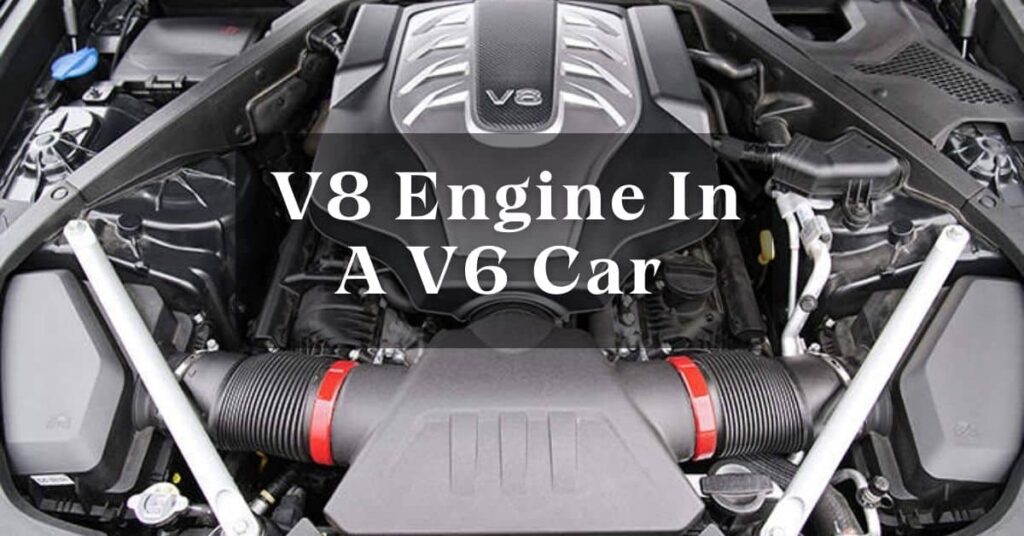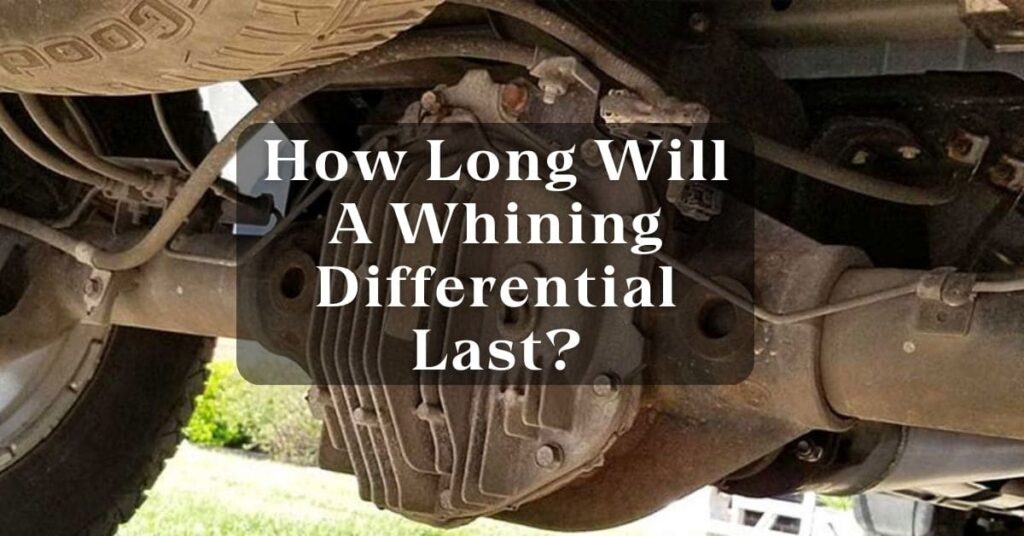The driveshaft is a crucial component of a vehicle’s drivetrain, While it’s designed to withstand the rigors of everyday driving.
During driving the car any problem can disturb the driver’s attention, including the driveshaft play. The driveshaft is an important component of the vehicle drivetrain. The driveshaft is responsible for transferring power from the transmission to the wheels.
But the question is “Is Driveshaft play normal?” The answer is It’s not uncommon for some amount of play or movement to develop over time. In this comprehensive guide, we’ll explore driveshaft play, addressing common queries, causes, fixes, and preventive measures to ensure a smooth and safe driving experience.
Defining Driveshaft Play:
Driveshaft play refers to the slight movement or “play” that a driveshaft exhibits. While some play in the driveshaft is normal if it exceeds the limit it may result in serious issues. Let’s deep dive and explore normal and abnormal driveshift play.
Expected Driveshaft Play:
Rotational play is perfectly normal. That’s due to the required slop (backlash) between the gears. So the required lubrication is provided for the driveshaft to move.
Oldturkey03, an expert on iFixit, suggests that some movement in the driveshaft is expected. In your case, 1/16th of an inch (approximately 0.0625 inches) is within acceptable tolerances.
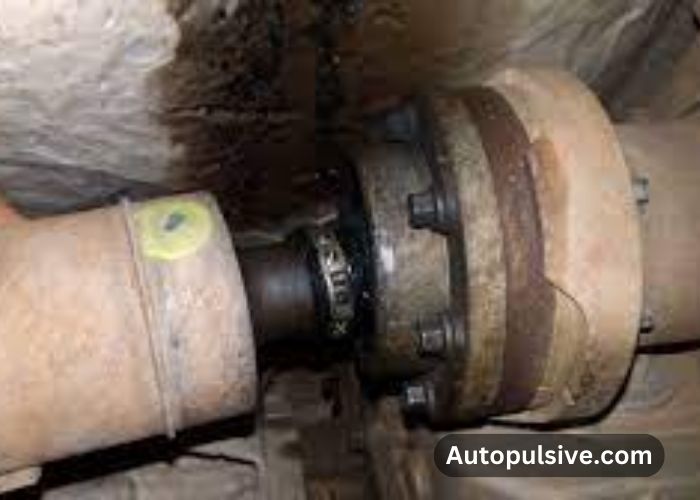
However, it’s essential to ensure you don’t experience vibration sounds (thumping) while driving, as that could be more common for a problematic bearing.
Ideal Driveshaft Play: Testing:
Less than one inch of play in the driveshaft is bearable which is referred to as minimal play. But it depends on the type of the vehicle and its model. If the driveshift play crosses its limits you should have to inspect your vehicle.
Understanding Causes: Why Driveshaft Play Is More Than Normal?:
To know the exact problem it is necessary to find the exact reason for the problem. Here I am going to explain some causes that can result in Drivesshift problems. Don’t miss the fourth one.
1. Worn Universal Joints (U-Joints):
U-joints connect the driveshaft to the transmission and differential. Over time, they can wear out due to lack of lubrication, rust, or excessive torque.
2. Imbalanced Driveshaft:
An imbalanced driveshaft can lead to play and vibrations. Imbalance can occur due to manufacturing defects or damage.
3. Loose Bolts or Fasteners:
Loose bolts connecting the driveshaft to the transmission, differential, or center bearing can cause play. Regular inspections and tightening of bolts are essential.
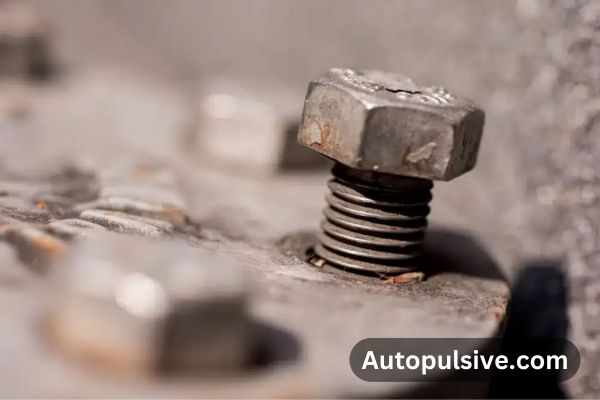
4. Worn Slip Yoke Splines:
If the splines on the slip yoke wear out, it can result in play.
5. Driveshaft Misalignment:
Incorrect installation or damage to components can lead to misalignment, causing play and vibrations.
6. Excessive Torque or Heavy Loads:
Aggressive driving, towing heavy loads, or off-road use can stress the driveshaft, leading to play.
Effective Fixes for Excessive Driveshaft Play:
Fixing driveshaft play involves identifying the root cause and taking appropriate steps. Here I am going to explain the step-by-step fixation guideline. If you are not previously a mechanic of a car then you should consider the professional. Otherwise, if you are a mechanic and have some previous exploration with the car then you can do it by yourself by following my guidelines.
1. Inspect and Diagnose:
Raise the vehicle securely using jack stands. Visually inspect the driveshaft, U-joints, center bearing, and other components for wear or damage. Check for play by gently moving the driveshaft sideways.

2. Replace Worn Components:
Replace worn U-joints and center bearing if damaged. Consider replacing the entire driveshaft if it is severely worn or imbalanced.
3. Balance the Driveshaft:
Take the driveshaft to a professional shop for dynamic balancing to reduce vibrations.
4. Tighten Bolts and Fasteners:
Torque all bolts connecting the driveshaft components to prevent play.
5. Address Slip Yoke Issues:
Replace the slip yoke if the splines are worn and apply grease to prevent corrosion.
6. Alignment and Installation:
Ensure proper alignment during installation with the transmission, differential, and center bearing.
7. Test Drive and Monitor:
After repairs, test drive the vehicle to check for vibrations or play. Monitor the driveshaft’s performance over time.
Preventive Measures to Maintain Driveshaft Play :
Preventing driveshaft play involves regular maintenance and attention to key components. Here are some steps you can take to keep your driveshaft in good condition:
- Lubricate U-joints: Grease the U-joints periodically to reduce wear and play.
- Inspect U-Joints and Center Bearing: Regularly check for signs of wear or damage and replace as needed.
- Check Bolts and Fasteners: Tighten bolts connecting the driveshaft components regularly.
- Balance the Driveshaft: Consider professional balancing if you notice vibrations or play.
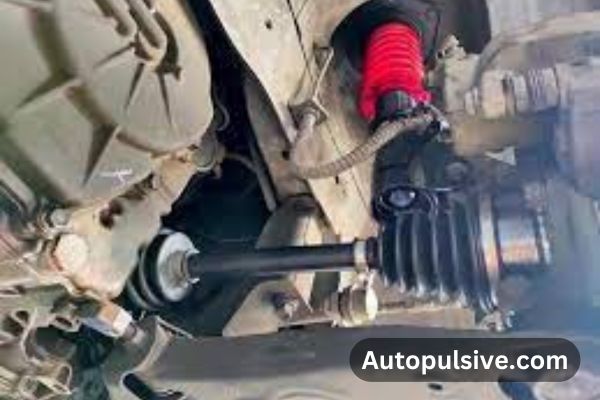
- Avoid Excessive Torque and Heavy Loads: Drive smoothly and avoid aggressive acceleration or heavy loads to minimize stress on the driveshaft.
- Inspect Slip Yoke Splines: Check for wear and apply grease to prevent corrosion.
- Proper Installation and Alignment: Ensure correct alignment during installation to prevent misalignment and play.
- Regular Maintenance: Include driveshaft inspection in routine vehicle maintenance to address issues promptly.
Frequently Asked Questions:
Q1: How Much Does It Cost to Fix a Driveshaft?
The cost to fix a driveshaft varies based on factors like vehicle type and repair method. Professional repair by a mechanic averages $300 to $800, covering parts and labor. DIY repair may range from $250 to $750 for parts and $300 to $500 for labor. Front-wheel drive cars may cost $500 to $1,200 for half-shaft replacement. All-wheel or four-wheel-drive vehicles may incur higher costs. Actual expenses depend on location, vehicle model, and repair shop.
Q2: Can I Drive With a Bad Driveshaft?
Driving with a faulty driveshaft poses safety risks, including vibrations and potential loss of power to the wheels. Symptoms of a bad driveshaft include vibrations, clunking sounds, and difficulty shifting gears. If you suspect issues, avoid high speeds and inspect the driveshaft visually. Promptly consult a mechanic for diagnosis and repairs to ensure safe driving conditions. Prioritize safety and have your vehicle inspected if unsure.
Conclusion:
By understanding the causes of driveshaft play and implementing effective fixes, you can ensure the continued safe and smooth operation of your vehicle’s drivetrain. Regular maintenance and prompt attention to any signs of play or vibration will help extend the life of your driveshaft and contribute to a better driving experience.
Also Read:
- Why Does My Car Tire Lose 5 PSI in a Week?
- How Do You Inflate A Car Tire With A Bike Pump? A Practical Guide in 5 Easy Steps
- Why do my RC car’s tires wear out so fast? Tips to Maintain Performance Over Time
- Is A 1.6 Engine Good For First Car? Make A Best Decision
- Can You Spray Your Engine Bay With Water? Best Guide to Prevent Damage
- Why Does My Car Tire Lose 5 PSI in a Week? - 4 November 2024
- How Do You Inflate A Car Tire With A Bike Pump? A Practical Guide in 5 Easy Steps - 30 October 2024
- Why do my RC car’s tires wear out so fast? Tips to Maintain Performance Over Time - 18 October 2024

